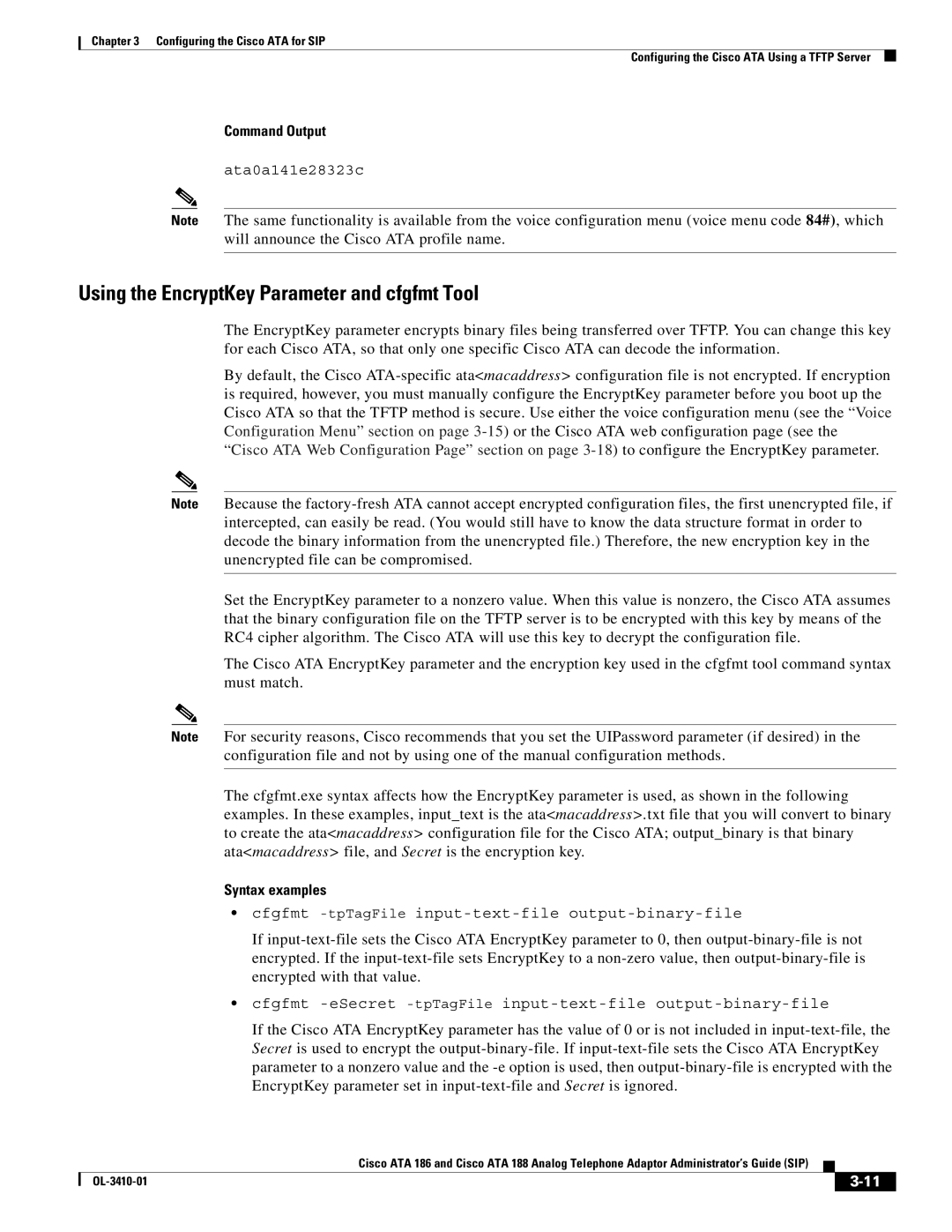
Chapter 3 Configuring the Cisco ATA for SIP
Configuring the Cisco ATA Using a TFTP Server
Command Output
ata0a141e28323c
Note The same functionality is available from the voice configuration menu (voice menu code 84#), which will announce the Cisco ATA profile name.
Using the EncryptKey Parameter and cfgfmt Tool
The EncryptKey parameter encrypts binary files being transferred over TFTP. You can change this key for each Cisco ATA, so that only one specific Cisco ATA can decode the information.
By default, the Cisco
Note Because the
Set the EncryptKey parameter to a nonzero value. When this value is nonzero, the Cisco ATA assumes that the binary configuration file on the TFTP server is to be encrypted with this key by means of the RC4 cipher algorithm. The Cisco ATA will use this key to decrypt the configuration file.
The Cisco ATA EncryptKey parameter and the encryption key used in the cfgfmt tool command syntax must match.
Note For security reasons, Cisco recommends that you set the UIPassword parameter (if desired) in the configuration file and not by using one of the manual configuration methods.
The cfgfmt.exe syntax affects how the EncryptKey parameter is used, as shown in the following examples. In these examples, input_text is the ata<macaddress>.txt file that you will convert to binary to create the ata<macaddress> configuration file for the Cisco ATA; output_binary is that binary ata<macaddress> file, and Secret is the encryption key.
Syntax examples
•cfgfmt
If
•cfgfmt
If the Cisco ATA EncryptKey parameter has the value of 0 or is not included in
Cisco ATA 186 and Cisco ATA 188 Analog Telephone Adaptor Administrator’s Guide (SIP)
|
| ||
|
|
